Can’t Get Enough of Scrap?

We have a Website for that.
This post was written by JMM School Program Coordinator Paige Woodhouse. To read more posts from Paige, click here!
I had the opportunity to be a part of a special project team for our Scrap Yard: Innovators of Recycling exhibit. This team was tasked with designing a website to complement the exhibit experience.
Our goal was to create a website that would allow visitors to continue exploring Scrap Yard after they left JMM. We did not intend the website to replicate the physical exhibit online, rather, to be an additional resource geared towards those who have seen the exhibit. It is for those who want to dig a little deeper into the technology, materials, history, and stories shared in Scrap Yard. We also wanted something that would allow JMM to share the stories that didn’t make it into the exhibit. With those goals in mind, our team set out and designed ScrapYardExhibit.org.
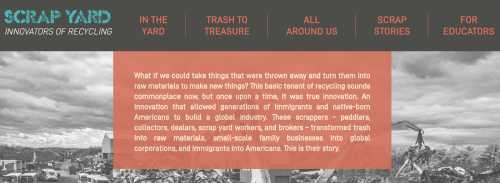
The design of the website reflects the visuals that visitors experience while in the physical exhibit. However, the information is organized in a unique way. A critical step to website design is information architecture which creates the wireframe of the website. Or in simple terms, how the information is organized to create the desired experience for someone exploring the website.
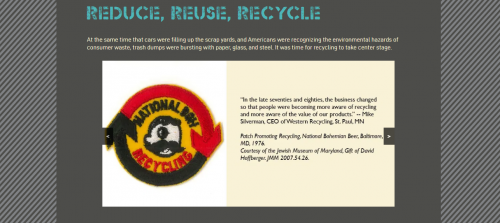
The website consists of 4 sections:
>In the Yard. This section looks at physical scrap yards, what equipment is used, and the processes that take place in them.
>Trash to Treasure. This section explores scrap materials, how scrap can be used, and its value. This section also explores the scrap industry’s connection to conflicts.
>All Around Us. This section puts the scrap industry in context. It looks at the representation of scrap in popular culture and its relationship with the environment.
>Scrap Stories. This section shares full-length oral histories from people in the industry as well as other historical stories.
Through lots of research, writing, revising, more research, and more revising, our team created the content on the website. We learned a lot about the scrap industry while doing it. Here are three parts of the website worth checking out:
(1) In the scrap industry, different materials have special names, a “scrap shorthand.” This shorthand typically consisted of four-letter words. For example, in 1919 a scrap yard might receive a truckload of Dale, also known as No. 2 Copper wire. Maybe someone was selling skim, reef, and grow – or tin foil, zinc, and aluminum foil. Intern Ash created a game for the website using the scrap codenames in a fun way. Using the name generator, you can determine your randomly selected scrap code name and learn what it means.
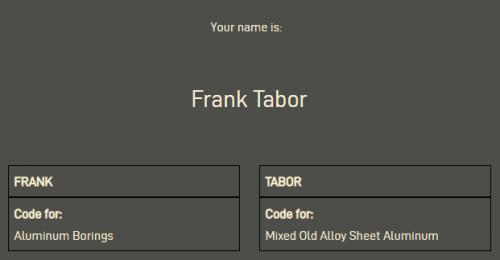
(2) One of the greatest catalysts for generating new forms of ‘creative destruction’ was been war. To expand upon the Creative Destruction section of the exhibit, our team created a timeline of conflicts and connections to the scrap industry.
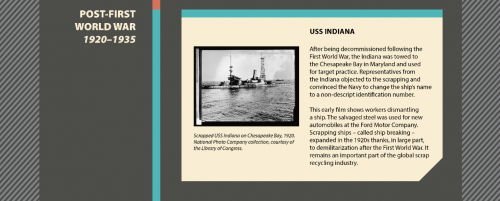
(3) One of the main reasons for creating the website was to be able to share stories from the scrap industry. The Scrap Stories section is home to full-length oral histories of people talking about the industry in their own words. For those who enjoyed listening to the oral histories in the exhibit, this section is for you. These videos and transcripts bring to life the experiences of contemporaries in the industry.
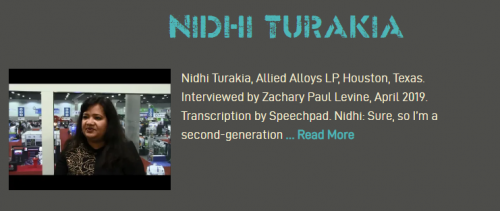
It is impossible to fit everything about the history of the scrap industry into an exhibit. Our curatorial team did a phenomenal job. Creating this website, with my fellow team members, allows JMM to share some of the things that didn’t make it onto the panels, videos, and hands-on activities in the exhibit. It continues the stories shared through the exhibit’s selected artifacts, documents, and photographs. The experience of Scrap Yard: Innovators of Recycling doesn’t end after you walk out of the exhibit. There is much more to explore at ScrapYardExhibit.org.
